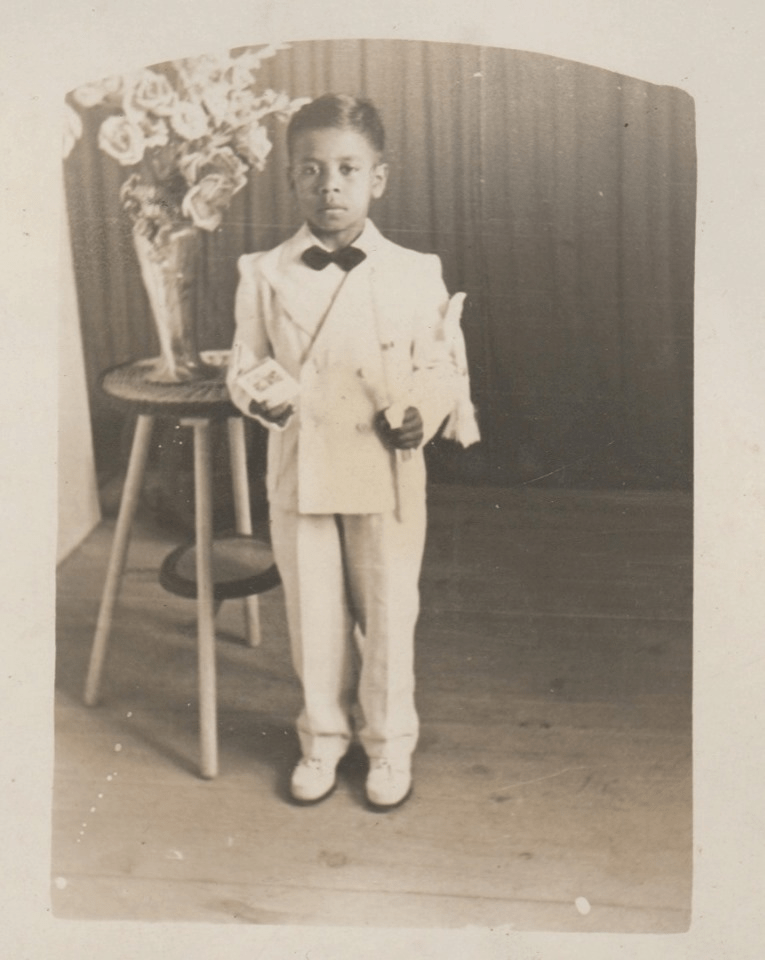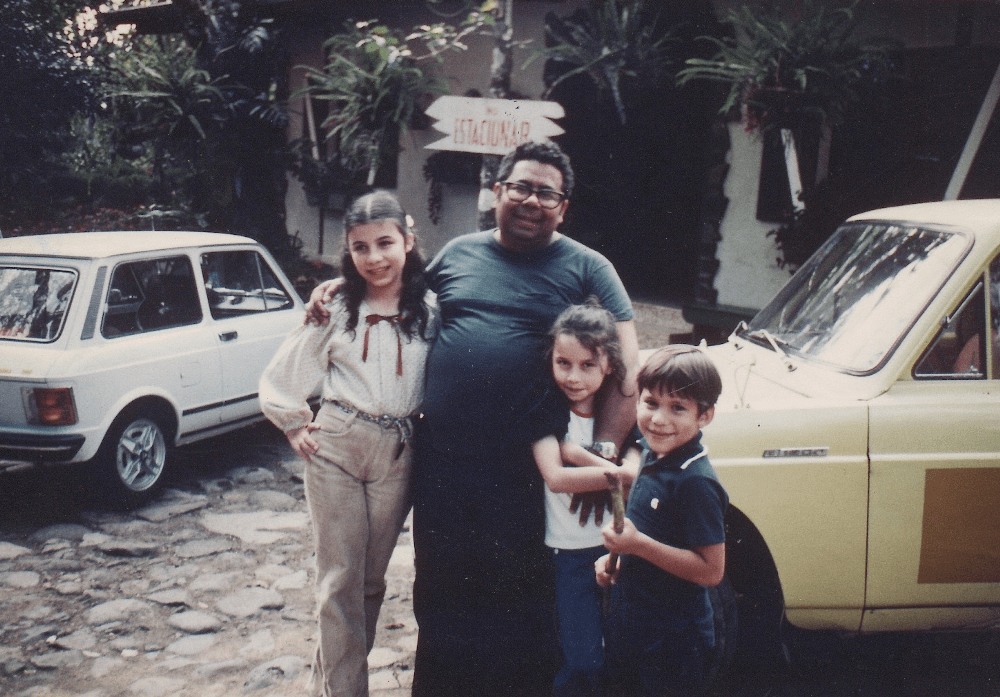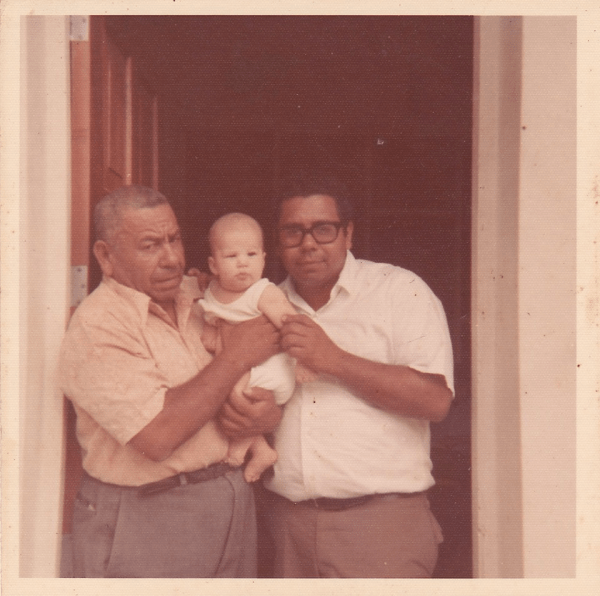Why My Nicaraguan Father Did Not “See” His Blackness
and how Latinx Anti-Black Racism Feeds On Racial Silence
By Victoria Gonzalez-Rivera*
HAVANA TIMES – Born in 1942 in the small town of Matagalpa, in central Nicaragua, my father died right before Hurricane Mitch devastated Nicaragua in 1998. Like all of us, his life was shaped by structural inequalities that he had no control over as well as by the choices he made. One aspect of his life that he had very little control over was his appearance, specifically his Afro-mestizo appearance.
When pressed, my father would acknowledge that he had African ancestry. He was constantly reminded of it by the people around him. The racialized nickname “negro” was one that he heard often until his untimely death at age 56. More often than not, it was said lovingly by other Afro-mestizo Nicaraguans and people he cherished. But sometimes the racialized teasing was vicious and cruel, as it was on the day of his first Communion, when at the age of 6 or 7 he was mocked for wearing an all-white outfit and called “una mosca en leche” (a fly in milk).

When I was a child, I witnessed him being racially profiled and discriminated against by other Nicaraguans who were lighter-skinned, ones who looked like me. I never got a chance to ask him about the emotional toll that must have had on him.
What I do know is that my father believed racism against Black and Indigenous people in the U.S. was worse than and different from racism in Latin America and that he was fundamentally different from all “gringos”. My father did not speak English and he only visited the U.S. twice. The first time was to marry my white mother in 1967. The second time was after their divorce, in 1985, to visit my siblings and me in inner-city Detroit.
My father was a very bright man. He was one of the first pediatricians in our small town. What he lacked was the vocabulary and the knowledge to speak about his Blackness. He was purposely denied the opportunity to learn about his history. This was done by a racist Nicaraguan education system that was mired in 450 years of white supremacy and by myriad other structures that perpetuated the myth that Nicaraguans on the Pacific and central regions of the country, i.e. western Nicaragua, were all/only mestizos. This was the same system that centered the experiences of those of us in western Nicaragua and turned the Caribbean regions of Nicaragua into a racialized and exoticized Other.

I do not know much about our African ancestors due to the silences in the historical record with regards to working-class and enslaved people of color. But as a historian I am able to understand why my father did not “see” his Blackness, why so many Latin Americans and Latinx people think we are not racist, and why so many of us actually are.
If I had not moved to the U.S. as a teenager I might have never “seen” race. As the Nicaraguan political scientist Dr. Juliet Hooker, a Professor at Brown University and a leading Creole scholar, notes, light-skinned Nicaraguans (like me) who live in the U.S. tend to encounter racism for the first time when we arrive as immigrants in the U.S. (La Prensa. Interview with Juliet Hooker by Amalia del Cid, June 7, 2020). People like me do not experience racism in Nicaragua, unlike Creole Nicaraguans, other Black/Afro-Nicaraguans, Indigenous Nicaraguans, dark-skinned mestizos, and Afro-mestizos like my father. It is easy to ignore “race” when you do not experience racism and you are not perceived as racialized but rather as the norm. Once light-skinned Nicaraguans arrive in the U.S., racism is often unavoidable because of the anti-immigrant bias in U.S. society, the prejudice against those of us who have accents and are Spanish-surnamed, and the long-standing discrimination against those we are assumed to be: Mexican Americans/Chicano/a/xs, Puerto Ricans, Indigenous peoples, and mixed-raced individuals in the U.S.

But why is it that someone like my father would not have called the taunting and the discrimination he experienced racism? And why did he not appear to object to being called “negro”? And finally, why did he think that anti-Black racism was really only a problem in the U.S.?
Although western Nicaragua is the product of a racist colonial system that lasted for 300 years, until independence in 1821, that system was different from the racist colonial system that shaped the U.S. It was not necessarily better or worse, just different. By examining those differences we can find answers to the questions I ask about my father. Those differences also help explain why so many of us who are light-skinned mestizo and Afro-mestizo Latinx individuals don’t “see” our own anti-Black racism and/or remain silent when we witness it.
Here I will focus on three major differences in the racial histories of western Nicaragua and the United States. These are ones which I think are most useful to comprehending the clash between U.S. understandings of blackness and racism and the understandings of blackness and racism among Latin Americans who were colonized by the Spanish.
Racial mixing
In western Nicaragua, the region colonized by the Spanish, as in the rest of the Americas colonized by the Spanish, there were no legal prohibitions against interracial marriages. In the U.S., on the other hand, laws against so-called “miscegenation” existed into the second half of the twentieth century. This resulted in large mixed-race populations developing as early as the 1600s in places like western Nicaragua (some of which were free early on), in contrast to the United States, which was not colonized until the 1620s and where what is usually referred to as “racial mixing” was not as widespread.
While in the U.S. many adopted the “one drop rule,” which held that having an African ancestor made a person Black, this was not the case in so-called “Spanish America”. The Spanish colonizers developed a different racial hierarchy, one where mixed-race peoples acquired a different racial identity/label from that of their parents. This meant that in places like western Nicaragua (where Indigenous slavery legally ended in the 1540s but African slavery did not end until the 1820s), after the 1540s not all enslaved peoples were considered Black but all enslaved peoples had African ancestry. By the time independence came about, relatively few people in western Nicaragua identified as Black, even though many if not most western Nicaraguans had African ancestry. They did not consider themselves Black because they tended to be Afro-mestizos, like my father.
African slavery
With regards to African slavery, the U.S. and western Nicaragua had a lot in common despite some important differences. In both places enslaved Africans were bought and sold by colonizing Europeans. Approximately 600,000 enslaved Africans were brought to the U.S. through the Atlantic Slave trade, and in the case of western Nicaragua, the numbers were in the thousands, and possibly in the tens of thousands. In both places the fate of children was determined by the legal status of their mother, thus ensuring that white women would never give birth to slaves. And in both places there were communities of free Blacks and free mixed-race people of African ancestry in the period before slavery ended.
One major difference, however, between the U.S. and western Nicaragua is that in western Nicaragua African slavery ended in 1824, almost half a century before it ended in the United States. Another difference is that when slavery ended in western Nicaragua there were relatively few slaves there, especially when compared to the approximately 4 million people who were still enslaved in the U.S. in the 1860s.
These two factors helped create a western Nicaraguan imaginary in which the U.S. was racist against Blacks, and Nicaragua was not only not racist against Blacks, but did not have any Black Nicaraguans in western Nicaragua. Once African slavery stopped existing in western Nicaragua it was easier for non-Black Nicaraguans to believe there were no Nicaraguans of African ancestry at all in western Nicaragua.
Racial labels and racialized nicknames
After independence in 1821, racial labels stopped being used for legal purposes in western Nicaragua, as was the case elsewhere in Latin America. This was not the case in the United States, where the census continues even today to use racial labels to classify the population. It is important to point out that while the lack of labels is often portrayed as an anti-racist development in Latin America, it highly benefited the elites of Spanish ancestry who were born in the Americas, since they could now claim to be simply from the “American” continent (in contrast to the European continent) or simply “Nicaraguan” (and later on implicitly mestizo Nicaraguans). In other words, after fighting a war of independence against the Spanish, it benefited elites of Spanish ancestry in Latin America (elites formally known as Criollos to differentiate them from the Peninsulares, or Spaniards born in Spain) to no longer be considered Spanish at all. The colonial system that privileged whiteness and being Spanish remained untouched but now there were no Spanish/white people who were legally constituted as such. This dynamic helps explain why the “myth of Nicaragua mestiza” (Gould 1998) has been so powerful and seductive.
Once there was no official system of racial classification in western Nicaragua, there remained a system of white supremacy and the reality of a new nation made up mostly of Indigenous peoples, mestizos, and Afro-mestizos with a small, mostly white/light-skinned ruling elite. Given the high degree of racial mixing that had occurred over the course of 300 years of colonialism, most western Nicaraguans were related to people who looked different (sometimes vastly different) from themselves.

Not surprisingly perhaps, racialized identities –albeit permeable and porous ones — prevailed even in the absence of legal categorizations and even in the context of such vast racial mixing. And racialized nicknames continue to be the norm in most of Latin America despite public service advertising campaigns against them. While most western Nicaraguans see no harm in these nicknames, including ones like “chele” or “chela” that are applied to light-skinned Nicaraguans or white foreigners, Dr. Juliet Hooker reminds us that in a context that stigmatizes Blackness, not whiteness, racialized nicknames can be highly problematic (La Prensa. Interview with Juliet Hooker by Amalia del Cid, June 7, 2020).
African American sociologist Dr. Elizabeth Hordge-Freeman, a Professor at the University of Florida, has written extensively about the ways in which Black Brazilians, particularly mothers, “negotiate, challenge, and reproduce racism in their families” in her book The Color of Love (2015). She “examines the relationship between racialization and the emotional life of family…[and] sheds light on how families simultaneously resist and reproduce racial hierarchies.” Dr. Hordge-Freeman’s work points to the kind of research that could be done in western Nicaragua on families like mine. Moreover, her work made me realize that my father’s racial life might have been different and possibly better if his mother, who was visibly Afro-mestiza and is remembered as being “negrita y murruca,” had not died when he was only five years old.

Families are indeed where we first learn about self-love and self-hate. I did not fully realize this until a few years ago when I was back in Nicaragua with my three children and I had an encounter with my father’s 90-year-old cousin, one of the women who raised him after his mother died. I was very fond of my late aunt, but I had heard her make disparaging remarks against dark skin, even though she was not light skinned herself. During that particular trip she kept referring to one of my daughters as “la negrita” — as in “¿Y la negrita donde está?” (“Where is la negrita?) and “¿Y la negrita que quiere comer?” (“What does la negrita want to eat?). She must have noticed I was starting to get upset about this because she said something to me that I will never forget: “Yo le digo ‘la negrita’ porque es la única que se parece a nosotros” (“I call her ‘la negrita’ because she is the only one who looks like us”). These are the kinds of contradictions that led my father to not embrace his Blackness yet not complain when he was called “negro” either.
I witnessed the stigmatization of Blackness before I came to live in the U.S. I have been silent in the face of anti-Black racism in western Nicaragua and have benefited from the privileges afforded to those who are not Black or dark skinned. And yet my relationship to Blackness, like the relationship of so many other light-skinned Afro-mestizos to Blackness, is complicated and fraught with contradictions. Like my father before me, I also did not have the words to fight back against anti-Black racism.
The problem of anti-Black racism is one that plagues the world. It certainly plagues western Nicaragua. Light-skinned mestizo and Afro-mestizo Latinxs in the U.S. and light-skinned mestizo and Afro-mestizo Latin Americans wherever we are: we do not necessarily have to accept the imperialist logic of U.S. racialization (the emphasis on racial labels, the almost complete invisibility of Indigenous peoples, and the long-standing disdain for mixed-race peoples, for instance) to admit that our Latin American cultures privilege whiteness and our proximity to whiteness at the expense of Black lives. For those of us who live in the U.S., surely we have learned by now that our silence and complicity with anti-Black racism will not protect us from racism. Historically nothing has, except for our collective resistance. Shedding our anti-Black racism and denouncing anti-Black racism in our midst is long overdue. Only then can we begin to repair the damage racism has done. Black lives matter. Let’s listen. Let’s learn. Let’s heal.
—–
 *Victoria Gonzalez-Rivera, Ph.D. in Latin American history. Author of Before the Revolution. Women’s Rights and Right-Wing Politics in Nicaragua (Penn State, 2011) and SDSU professor.
*Victoria Gonzalez-Rivera, Ph.D. in Latin American history. Author of Before the Revolution. Women’s Rights and Right-Wing Politics in Nicaragua (Penn State, 2011) and SDSU professor.






I agree with Daniel Cisneros, quit putting so much emphasis on race and colour because by doing that you are simply taking the band aid off the wound sort of speak, feeding into the past, and actually prolonging the healing process. Was “la negrita” being mistreated by the aging aunt? I highly doubted. It’s not the colour of the skin that matters but the character of an individual as MLK once said.
Has your dad taken a DNA test? He looks like most Nicaraguans which aren’t African but predominantly Native American. Most Nicaraguans aren’t even light skinned either and when they are their features look indigenous.
A wonderful description of the complexities related to the various degrees of skin colour.
For those concerned about Cuba, it is interesting to note that Dr. Gonzalez-Rivera in discussing racial labels, mentions that the US Census “even today uses racial labels to classify the population.” Question number 6 in the 2012 National Census in Cuba was: “What is the colour of your skin?” providing space for three alternatives: White Metiza/Mulatto Black. That enables the Communist regime to claim that only 9.9% of the population is black – a quick glance at any of the Cuban sports teams, or a short walk through any Cuban town, will negate that!
The reference to an aged cousin calling a child “negrita” “because she looks like us”, is notable that it was not any particular family feature, but colour, that was the basis for the observation. It reminded me of one of my Cuban black nephews, who refers to his older daughter with an obvious degree of pride, as “my metiza”. The child’s mother has one white grandparent.
Such illustrations are an indication of how deep the history of supposed black inferiority is ingrained, even in many black people and particularly so in the nations based upon slavery. Cuba remember, was the last country to end it, and not until 1886, following which slaves were replaced by indentured Chinese “coolies”.
One can only commend Dr. Gonzalez-Rivera for her article and specifically her final plea!
“Black lives matter. Let’s listen. Let’s learn. Let’s heal.”
It must make for a miserable day to see everything in terms of race or color. How about thinking just in terms of being Humans? I am Nicaraguan-American and I am proud of my ancestry, but to linger on color and race will slow progress. I and many others will not be part of your racial/color inquisition. Get over the past!